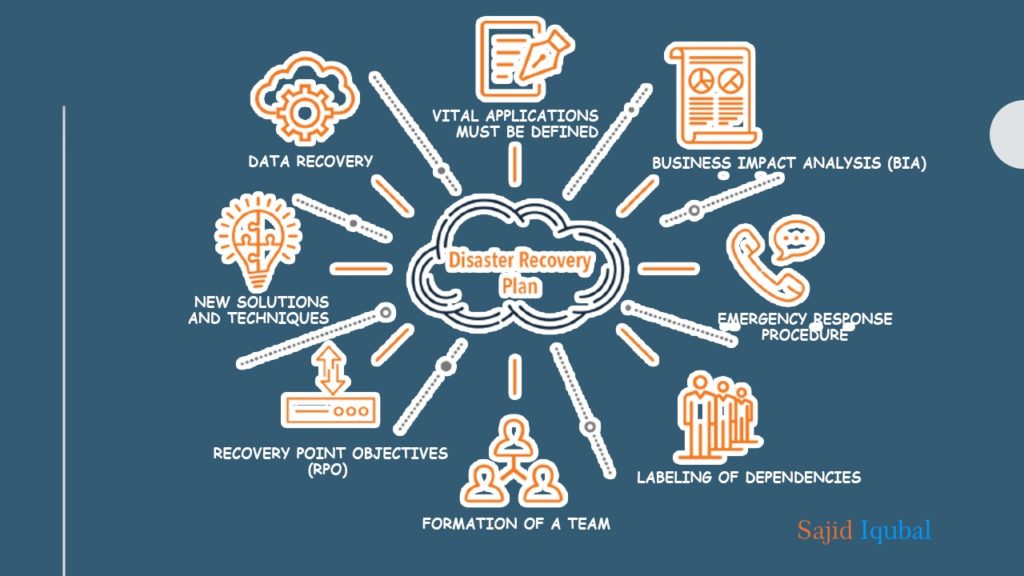Nearly three out of four business companies all around the world fail with respect to their disaster management plan and system. The most obvious thing in the world is that each and every business be it a new one, a small one, a big one, or an old one, all of them need to always be planning for the worst of all outcomes. If such companies and businesses are not well prepared with a good disaster recovery plan it can lead to being the cause of all sorts of troubles and mayhem for them.
It is to be always remembered by each and every business owner that their customers are their first and foremost priority because their success depends on the customers. A business owner must always keep in his mind the fact that his business and services are chosen by his customers because they trust him and have faith in the services provided by him. So not having a successful disaster recovery plan would lead to his letting his valuable customers down in a time of crisis or disaster. It will also affect his reputation negatively and might also ruin the business itself. This is what makes having a successful disaster management recovery plan so much important so that your business is never talked of as the one that got ruined because of a disaster.
In the modern era and the modern process of business, technology plays a vital role in its smooth and efficient ongoing and running. But technology is not always error-free and can sometimes malfunction. If the technology or service you use ever gets interrupted or broken down it could even lead to a loss of valuable data, all because of a disturbance that was not anticipated. In such cases, a good disaster recovery plan helps in minimizing and limiting the damage caused and can even restore the whole data and environment of your business technology o its normal pace as soon as possible.
What is a Disaster Recovery Plan?
A disaster recovery plan which is great and reliable must always be included in the continuity plan of your business often known as the BCP or the Business Continuity Plan. It must involve a set of steps and procedures that are fully complete in them and are able to cause a reduction in the downtime by setting their entire focus on the most effective recovery technique.
How to design a successful disaster recovery plan and be prepared for any calamity?
Here we have fifteen steps that will ensure that you have an immaculate and successful disaster recovery plan. But the first thing that you need to do is the identification of the most important activities and data and aspects of your business and how long is your business’ survival possible without them?

Critical business processes must be identified
The first thing you must do is take control over and identify the most important processes and activities that go on in your business. You must also determine how long can your business survive without those processes and operations.
Labeling of dependencies
The second thing you need to do is that you must have a proper diagnosis of each of those processes and the application’s maximum downtime respectively ad accordingly.
Vital applications must be defined
You must prepare a list of all the applications which need to be most urgently restored. A list of their urgent restoration time must also be made and always kept updated accordingly.
The current data recovery strategy must be reviewed and accessed-
You as a business owner must have a full complete understanding of things like backups vs. high availability vs. restore vs. Failover. There must be close inspection and investigation of the weaknesses and risks that are present correctly within each and every one of those areas.
With all these steps you must now have all the data and information required for the determination of your requirements of the recovery time for various processes, activities, and applications.
A Business Impact Analysis or BIA must be performed
When a business impact analysis is performed or conducted you are allowed to measure what the impact of downtime in various areas of your business activities and processes that are affected, you are allowed to determine the availability and requirements and also have an estimation made on the downtime’s cost which includes things like reduction in customer’s confidence, sales that were lost and other such things. You are even allowed to properly identify the compliance and legal levels with respect to data and its security, all of this with a conduction of a business impact analysis.
RPO or Recovery Point Objectives must be defined
Recovery point objectives or your business’ RPO is shown and reflected when you give utmost priority to the data dependencies of your business to make sure that your data and files can be easily restored through the regular backups and replications done of your data. All of this will be in alignment of the needs of your business and this s what makes RPO so important.
Distinguish RTO or the Recovery Time Objectives
Recovery Time Objective or RTO is the amount of time in which a full restoration of your data and databases is desired and required by you after and once your hardware fails or you suffer from the corruption of data. This is a very important step that will determine how long it will take for your business to get back on track after such a disastrous mishap.
Maximum Tolerable Downtime or MTD must be designated and determined
MTD or the maximum tolerable downtime is and depicts the maximum absolute time length that you can have your most urgent, necessary and important data, applications and hardware be unavailable for usage before your business undergoes and has to go through irreversible damage or you begin to lose customers and sales.
Once these steps are put in place successfully and effectively now you have to test your own hypothesis and get the information and know your own weaknesses and gaps in your technology. If you anticipate high risks you will then need to look for and invest in more strong, secure, innovative and intuitive solutions.
Risks must be assessed and determined
The success of your disaster recovery plan depends heavily on your being aware and having full awareness of the risks that your business will possibly face when things like data loss or other single failure points occur in your technology. To determine such risks that may be faced you must create an impact or a risk chart in which you can have a full record of such risks and rank them accordingly depending on their priority and most disastrous outcomes.
Your theory and assumptions must be tested
You need to test and assess your own disaster recovery plan and test it to ensure that in the time of inevitable crisis it will not fail you in any way. You need to analyze your disaster recovery plan and perform an analysis of the gap in technology of your present PTOs, RPOs and MTD vs. The RTOs, RPOs and MTD that you desire to have.

Redesign and make necessary changes accordingly
Does it feel like your disaster recovery plan is being hampered from being successful and the best because of some kind of data recovery vehicle that is inadequate or by archiving systems that are poor or by solutions that are outdated and old? If so then it might be time for you to check out more new innovative and intuitive technology and invest in that. You must make necessary investments by making them a priority to ensure that the risks areas and gaps in technology are all addresses and removed as far as possible and as soon as possible.
New solutions and techniques must be implemented
Now all you need to do is to ensure that the new solutions required to make your disaster recovery plan effective and successful are all implemented and incorporated in your plan as soon as possible.
With all these amazing steps in place you can now start to build a response plan which is strategic and assign your team with various responsibilities and roles.
An Emergency Response Procedure must be developed and put into place
Now you need to come up with a list of effective instructions that will define the procedures and criteria for achieving and getting a full recovery of data, proper response to such situations and also the restorations of all operations back to normal.
Alignment of procedures
You must at this step assign various rules for escalation for steps and procedures all of which might be required by the timeline requirements of your effective disaster recovery plan and MTD.
Formation of a DR Team
You must assign responsibilities and train your team to be able to respond to any disastrous situation effectively.
The above steps will ensure that your DRP is successful, dynamic, innovative, and effective.